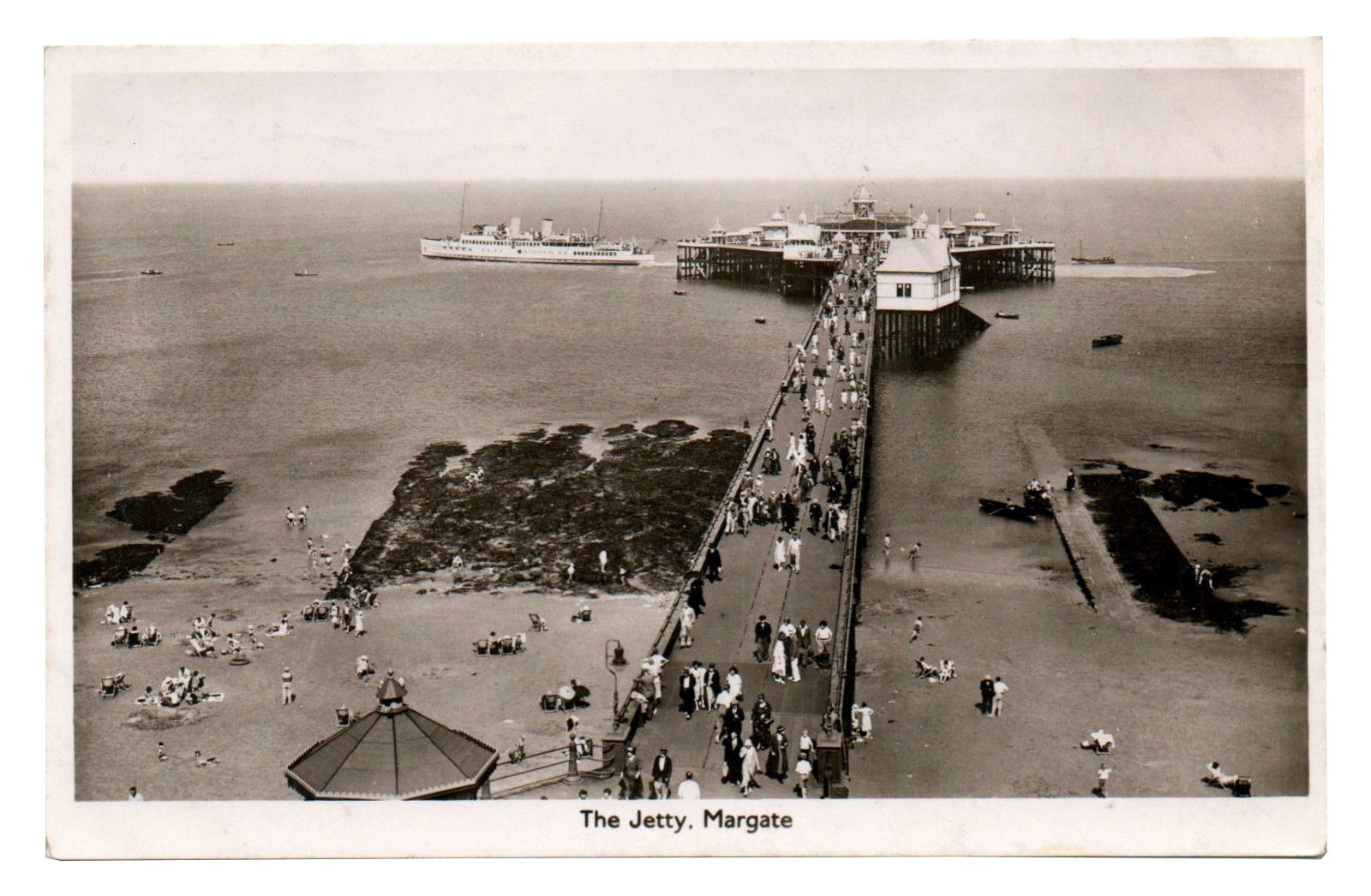 Margate pier, 1939. Departing from the jetty is the Royal Daffodil, which operated passenger routes from Tilbury, Southend and Margate to continental ports in northern France and Belgium. She was used extensively in the Dunkirk evacuation, rescuing around 8,000 troops of which 3,203 are recorded as being landed at Margate.
Margate pier, 1939. Departing from the jetty is the Royal Daffodil, which operated passenger routes from Tilbury, Southend and Margate to continental ports in northern France and Belgium. She was used extensively in the Dunkirk evacuation, rescuing around 8,000 troops of which 3,203 are recorded as being landed at Margate.The first notification to the civilian authorities in Margate of the growing crisis came via a briefing from the local military commander in the early hours of the 27th May. The Royal Navy promptly took over command of the jetty and established their headquarters in the Droit Office. However, it was left to the Civil Defence services to draw up plans to deal with an estimated 1,500 service personnel who were expected to be evacuated via the town. German reconnaissance photograph of Margate
German reconnaissance photograph of Margate
Margate was an obvious choice to receive both small and large vessels of the evacuation fleet, given its geographical proximity to Dunkirk and the town's well-developed infrastructure. The long pier with established docking facilities, its hospitals and a mainline railway station relatively close to the harbour made it a logical choice to relieve the pressure on the port of Dover.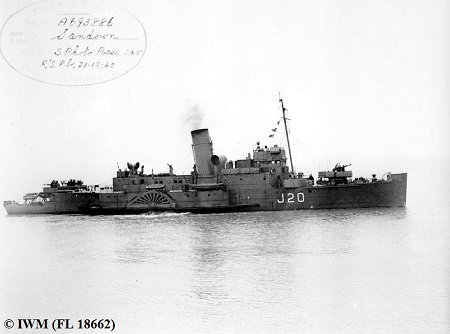
HMS Sandown in her wartime guise.
The first ship to arrive on the 28th May was the paddle steamer 'Sandown' which brought 201 troops, followed shortly by the 'Gracie Fields' which disembarked 281 men. By the 29th May, the evacuation began to move into overdrive and at its height there were fifty-plus vessels waiting off Margate to dock at the pier or harbour and discharge their human cargo. There were vessels of all types: naval minesweepers, pleasure steamers, paddle steamers, coasters, tramp steamers, barges and fishing boats.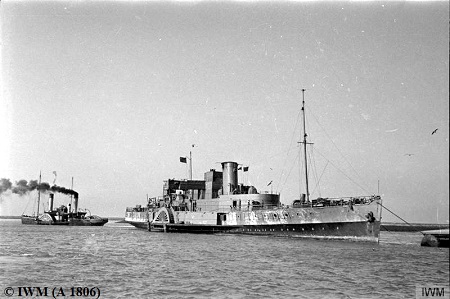
HMS Royal Eagle in Royal Navy livery. In her two trips to Margate, she landed 2,058 troops.
Once onshore, the troops were met by an improvised but thoroughly effective organisation. Troops were relieved of their arms and ammunition at the landward end of the pier and then loaded onto buses to transport them the three-quarters of a mile or so to Margate station. The seafront had been closed to the public due to the fear of air attack and the minimal anti-aircraft defences.

Margate railway station 2016.
At Margate station, troops were entrained; the British for transport to inland camps to rest and recuperate and to be re-organised, while the bulk of the French forces were moved to the south-west and shipped back to France to carry on the fight. In the booking hall of the station, a free canteen was set up by the Mayor and around 50 women of the town. No supplies were forthcoming from the military and therefore cups were commandeered from local catering establishments and provisions were sourced from personal donations from the people of Margate, and grocery stores in the town and the wider locality. At the station, soldiers were provided with tea and food and on the train, each soldier was given a packet of biscuits, a bar of chocolate and an apple for the journey.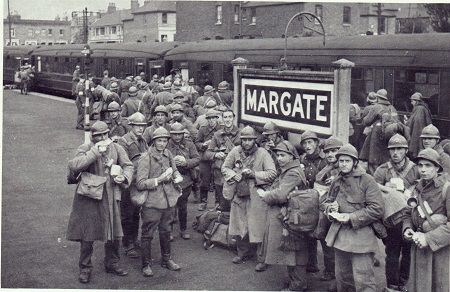
French troops at Margate station, May-June 1940.
Every soldier was also provided with a picture postcard of Margate to address to his wife or mother, with a message to say he was safe. These were collected, and arrangements made with the Post Office for free postage.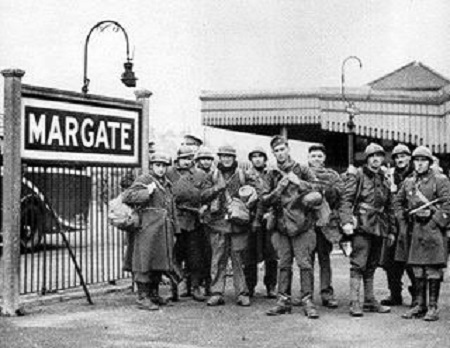
French troops at Margate station, May-June 1940.
Among the returning soldiers were many wounded. Serious casualties were despatched to the Royal Sea Bathing Hospital or Margate General Hospital for treatment. Those suffering from more superficial wounds were attended to by one of the First Aid stations established at Dreamland or the Winter Gardens.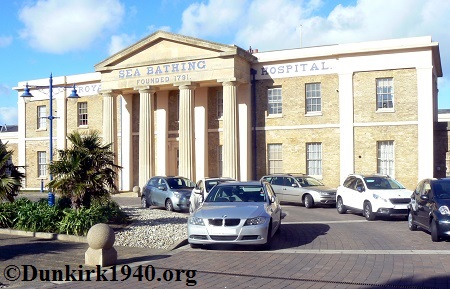
Royal Sea Bathing Hospital 2016.
Records made at the time show that over an eight-day period, 96 vessels berthed at Margate, landing 47,772 Allied servicemen and refugees. The contribution to this total ranges from the 'Royal Sovereign' which brought back 6,370 men from six trips, to a vessel simply referred to as 'A motor boat' which rescued 23 soldiers. In addition to the troops rescued, 13 French Army Alsatian dogs, complete with aluminium identity disks, were landed at Margate and like their human counterparts, were also repatriated to France!
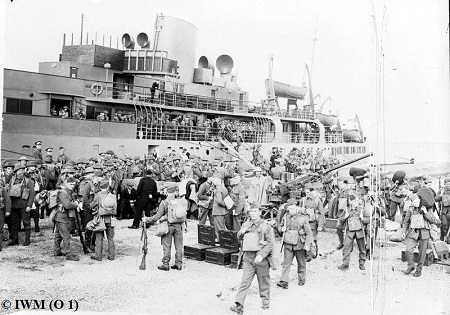
Royal Sovereign transporting the BEF to Cherbourg in October 1939.
Back
